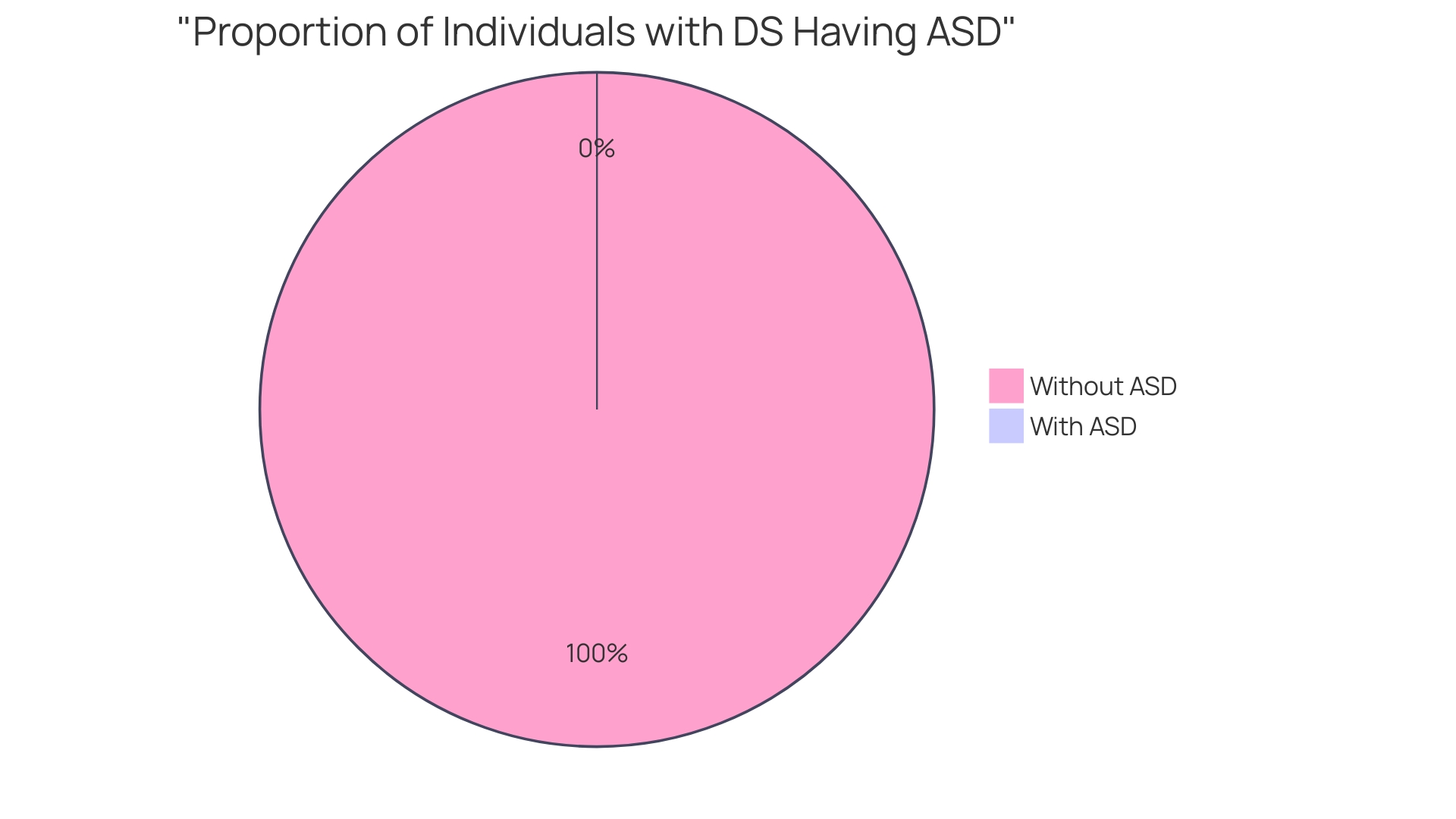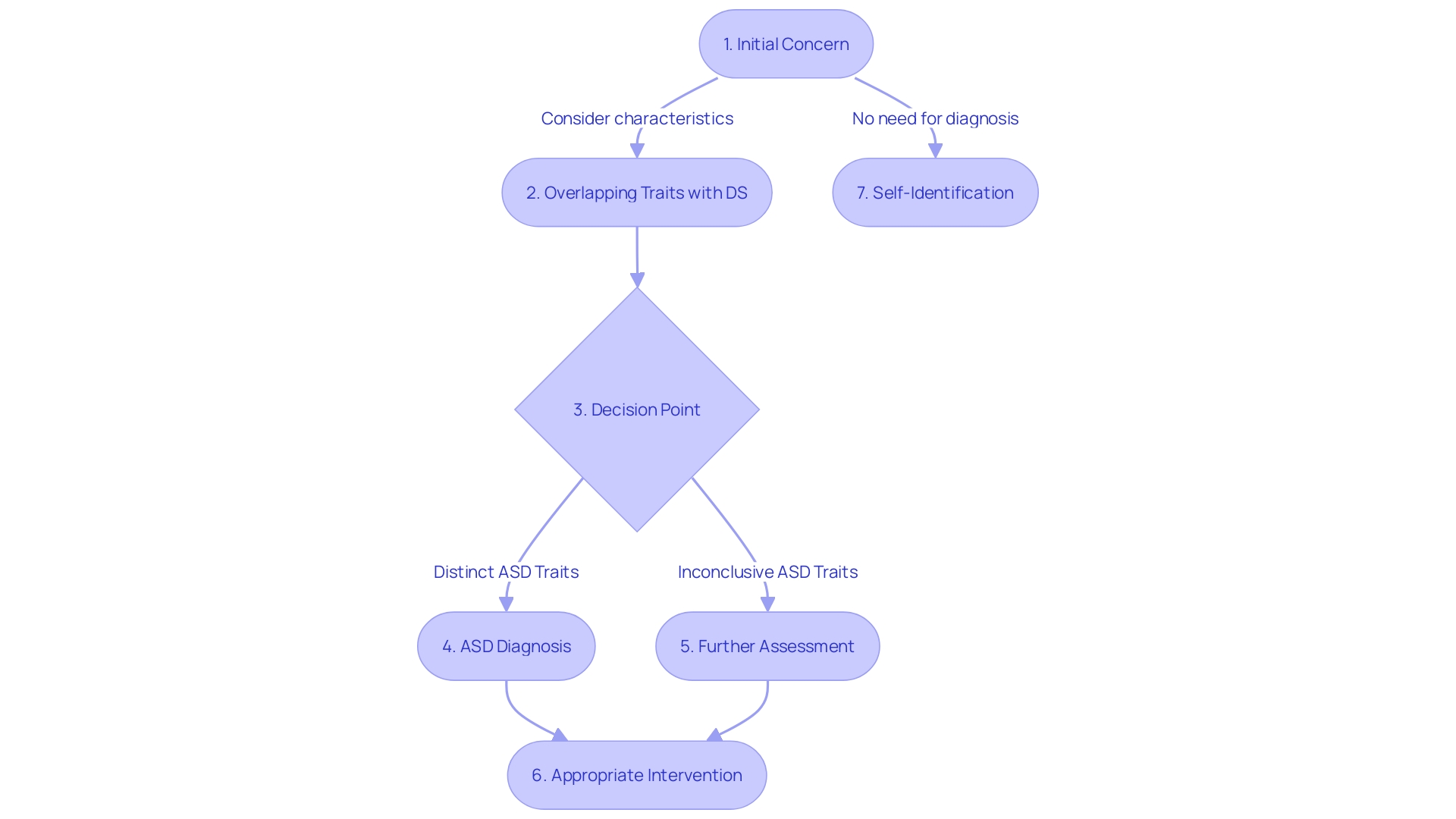Introduction
Down Syndrome (DS) and Autism Spectrum Disorder (ASD) are two distinct conditions with their own unique characteristics. While not every individual with DS will have ASD, there is an increased prevalence of ASD within the DS population. This article explores the link between DS and ASD, examining the unique challenges faced by individuals with both conditions and the impact on their families.
It also delves into the difficulties in diagnosing ASD in individuals with DS, the medical factors contributing to their co-morbidity, and the importance of understanding adaptive behavior and social interaction. Additionally, the article highlights the parental experiences and support systems available for families navigating the complexities of raising children with DS and ASD. By providing guidance and resources, this article aims to empower Parent Advocates in ensuring the well-being and development of their children.
Background: Down Syndrome and Autism Spectrum Disorder
Down Syndrome (DS) and Autism Spectrum Disorder (ASD) are two distinct conditions with their own unique characteristics. DS is a genetic disorder caused by the presence of an extra copy of chromosome 21, while ASD is a developmental disorder that affects how a person perceives and socializes with others.
However, there is a growing recognition of a possible connection between these two conditions. This case study aims to explore the link between DS and ASD and shed light on the implications for individuals and their families.
The Autistic Phenotype in Down Syndrome
While not every individual with DS will have ASD, research suggests that there is an increased prevalence of ASD within the DS population. Studies have identified a specific phenotype associated with co-occurring DS and ASD, characterized by unique behavioral patterns and challenges. Understanding the characteristics and manifestations of this phenotype is crucial in providing appropriate support and interventions for individuals with DS and ASD.

Case Study: George - Down's Syndrome with Complex Needs
This section presents a case study of George, a young boy diagnosed with DS and ASD. George's journey highlights the complexities and challenges faced by individuals with both conditions, as well as the impact on his family and support systems. By examining George's experiences, we can gain valuable insights into the interplay between DS and ASD and identify effective strategies for promoting his development and well-being.
Challenges in Diagnosing Autism in Down Syndrome
Diagnosing ASD in individuals with DS can be particularly challenging due to overlapping characteristics and diagnostic criteria. This section explores the unique difficulties faced by clinicians and researchers in accurately identifying and assessing ASD in individuals with DS. Understanding these challenges is essential in improving diagnostic accuracy and ensuring that individuals receive appropriate interventions and support.

Medical Factors Contributing to Co-morbid Autism
Beyond genetic factors, there is growing evidence of various medical factors that may contribute to the presence of co-morbid DS and ASD. This section examines the potential medical factors that may influence the development and manifestation of ASD in individuals with DS. By understanding these factors, healthcare professionals can better address the specific needs and challenges faced by individuals with co-occurring DS and ASD.
Adaptive Behavior and Social Interaction in Down Syndrome with Autism
Navigating the intertwined paths of Down syndrome (DS) and Autism Spectrum Disorder (ASD) requires a keen understanding of their unique interplay, particularly in the realms of adaptive behaviors, communication, and social engagement. These individuals often defy the generalized views that can cloud society's perceptions.
As noted by leading experts, stereotypes — those fixed ideas about groups or conditions — can be markedly off target, whether positive, negative, or neutral. They arise from sparse information or isolated experiences and gain traction through media representation and societal narratives.
More critically, once established, stereotypes about the capabilities and challenges of those with DS and ASD can stubbornly persist, obscuring the true picture. Diligent efforts to comprehend the particular struggles and capabilities of those with coexisting DS and ASD are fundamental. By doing so, we can craft supportive interventions that not only accommodate but also celebrate their distinct needs, paving the way for enriched growth and an enhanced quality of life.
Parental Experiences and Support Systems
Parenthood comes with its fair share of challenges and triumphs, more so for those who shepherd the growth of children with Down syndrome (DS) or Autism Spectrum Disorder (ASD). Parents and caregivers find themselves on an intricate path that demands not only immense love but also a profound understanding of their child's unique needs. Studies indicate that such families often encounter a dearth of contemporary resources and support, which can make their journey seem daunting.
In the trenches of this reality, mothers show remarkable resilience, even when research to better aid them lags notably behind. They make critical decisions, often shouldering the weight of a prenatal diagnosis of DS and the myriad of implications it carries. Their narratives, filled with insights from the crucible of lived experience, chart the troughs and peaks from diagnosis to decision-making, and the interwoven interactions with healthcare professionals.
Mothers are fonts of wisdom, especially those who have navigated these waters before, and their counsel to healthcare providers is invaluable. They routinely call for—and rightfully deserve—support that is not only robust but tinged with empathy and respect, spanning the entirety of their journey from prenatality onwards. It is these voices that encapsulate the call to action for enhanced support systems that respect their choices, understand their challenges, and acknowledge their experiences with the sensitivity they warrant.
Conclusion
In conclusion, the link between Down Syndrome (DS) and Autism Spectrum Disorder (ASD) is a topic of growing recognition and importance. While not every individual with DS will have ASD, there is an increased prevalence of ASD within the DS population.
Understanding the unique challenges faced by individuals with both conditions is crucial in providing appropriate support and interventions. Diagnosing ASD in individuals with DS presents challenges due to overlapping characteristics and diagnostic criteria.
Clinicians and researchers must navigate these complexities to ensure accurate identification and assessment, leading to appropriate interventions and support. The co-occurrence of DS and ASD is influenced by various medical factors beyond genetics.
By exploring and understanding these factors, healthcare professionals can address the specific needs of individuals with co-morbid DS and ASD more effectively. In the realm of adaptive behavior and social interaction, it is important to move past stereotypes and understand the distinct struggles and capabilities of individuals with DS and ASD.
By doing so, we can develop supportive interventions that celebrate their unique needs, facilitating enriched growth and an enhanced quality of life. Parents and caregivers play a crucial role in navigating the challenges faced by individuals with DS and ASD. Their resilience and insights from lived experience can guide healthcare providers in providing robust support systems that respect their choices, understand their challenges, and acknowledge their experiences with the sensitivity they deserve. In conclusion, by empowering parent advocates with guidance and resources, we can ensure the well-being and development of individuals with DS and ASD. Together, we can create a supportive environment that celebrates their unique abilities and helps them thrive.




